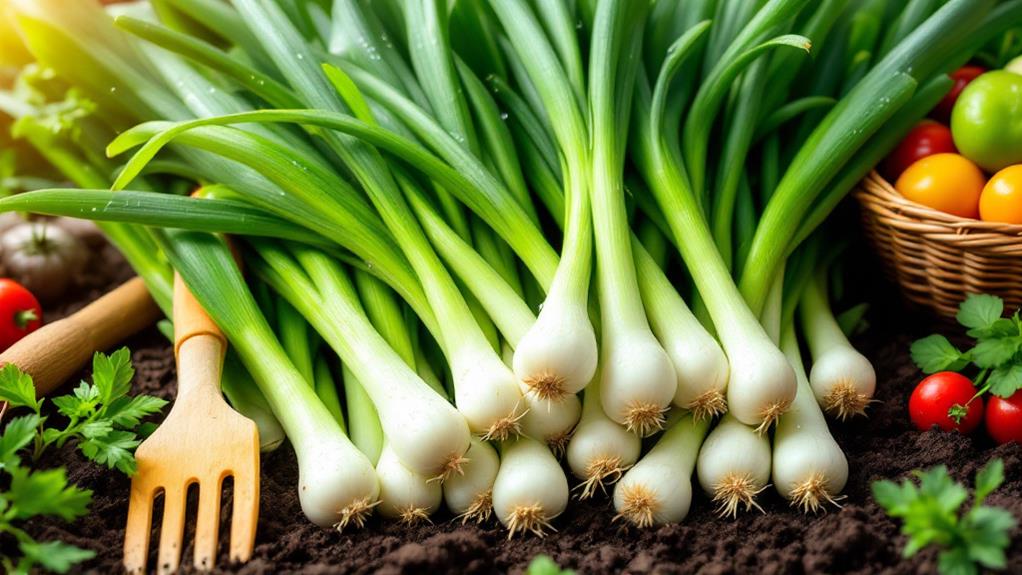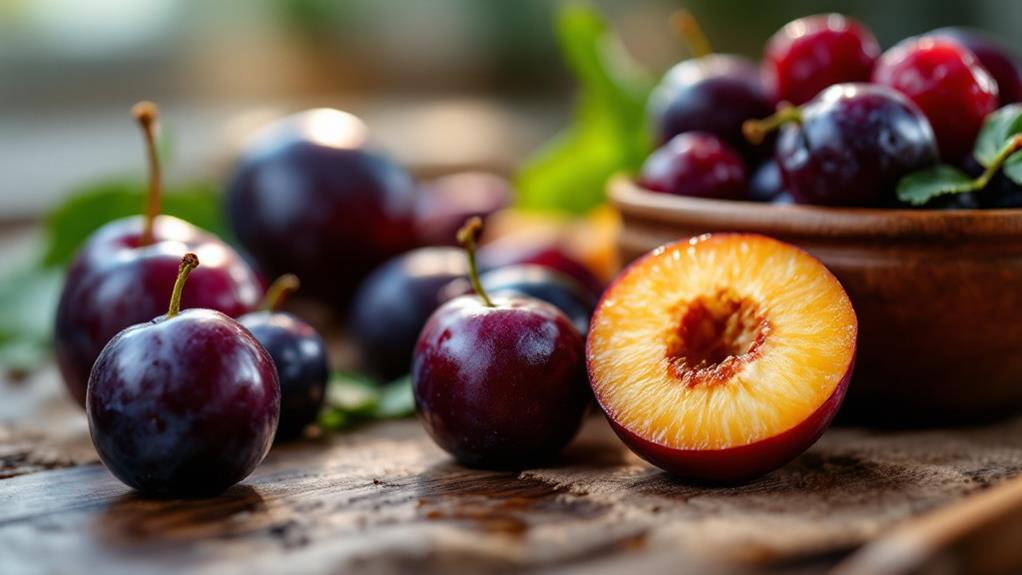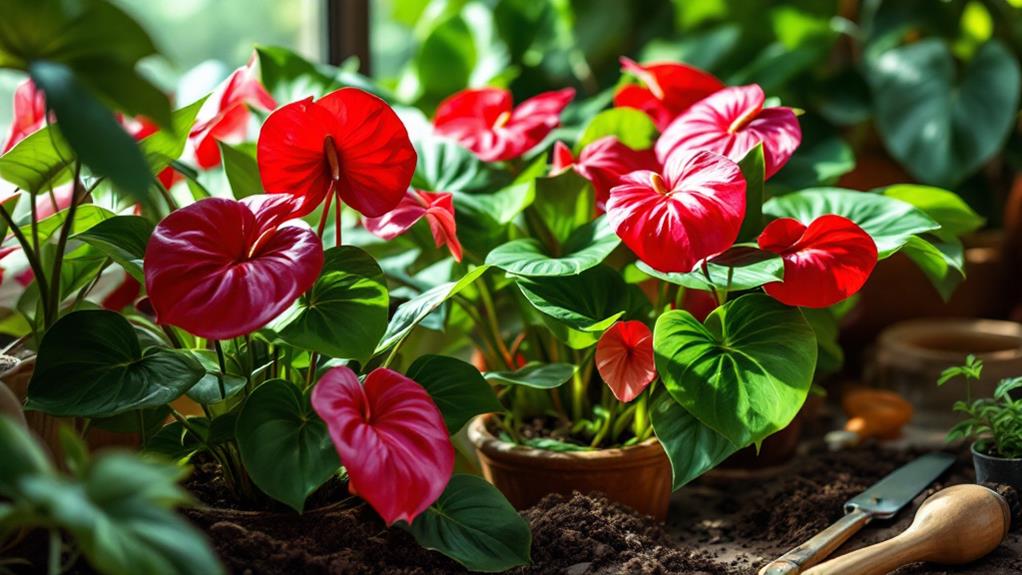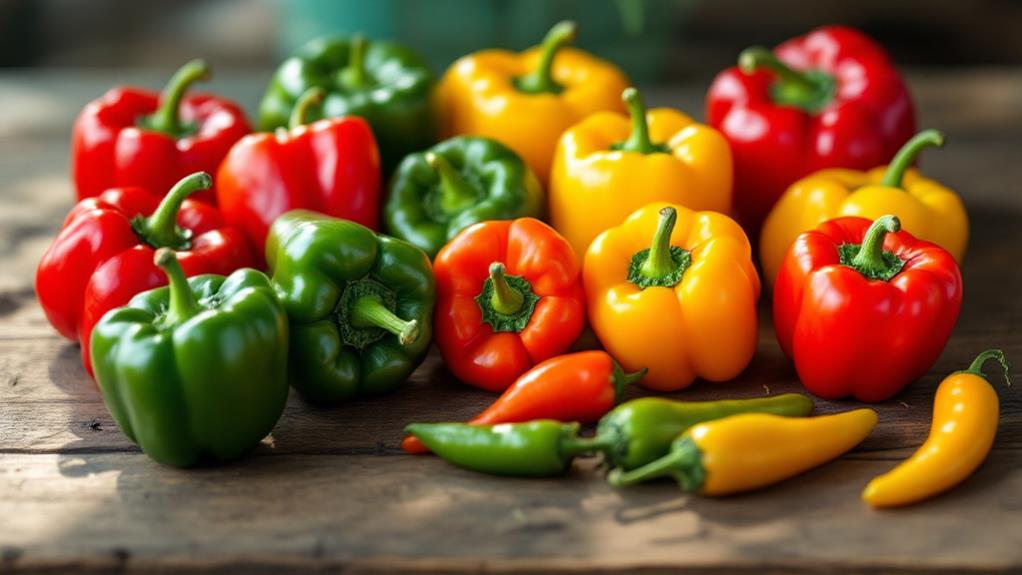Pros and Cons of Growing Vegetables in Containers
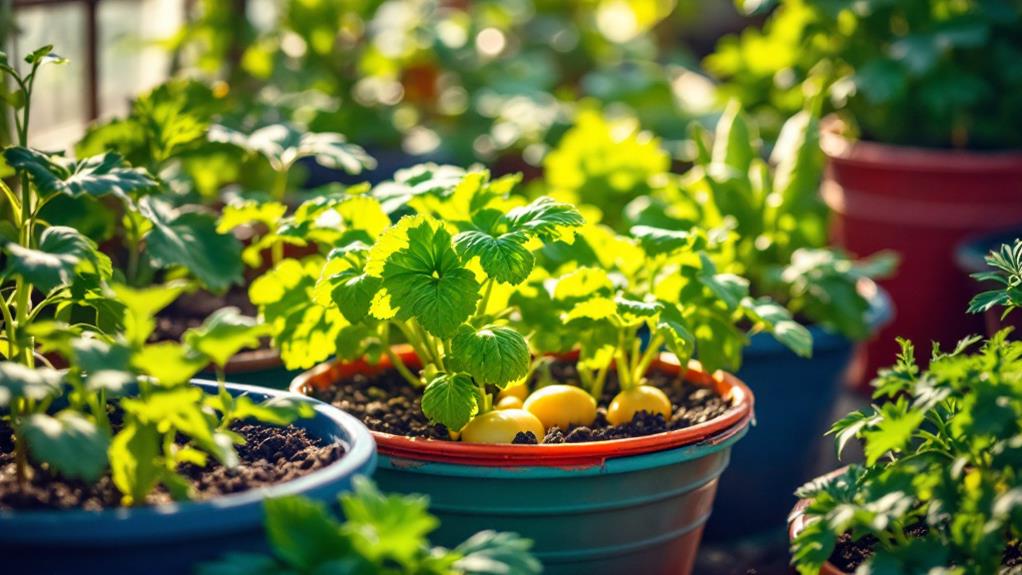
Growing vegetables in containers is a practical option, especially if you have limited space. You can easily place them at a comfortable height and use tailored soil for better growth and drainage. Additionally, they improve your garden's aesthetic. However, container gardening does come with its challenges. Plants dry out faster, need frequent watering, and may suffer from limited root space. The containers themselves can be heavy and require re-potting every few years to avoid root binding. You can find solutions to these issues and investigate more on maximizing container gardening benefits as you learn further.
Advantages of Container Gardening
Embracing container gardening offers several advantages that can transform your gardening experience. When you grow vegetables in containers, you gain the ability to manage accessibility and convenience, especially if you have physical limitations. By placing containers at suitable heights, you can tend to your plants comfortably. In addition, the flexibility of container gardening allows you to improve sunlight exposure and safeguard your plants from unfavorable weather by simply moving the containers as needed.
One of the major benefits of container gardening is the potential for better growth control. You can use custom soil mixes tailored specifically to the needs of your vegetables, which boosts plant health and reduces the risk of soil-borne pests and diseases. This level of control is difficult to achieve with traditional in-ground gardening. Furthermore, containers guarantee good drainage, preventing waterlogged roots and promoting healthy plant development.
Container gardening also enables you to extend the growing season. By repositioning your vegetables in containers to catch the ideal sunlight, you can increase yields. Moreover, the aesthetic appeal of container gardens is undeniable, as they offer lively colors and diverse plant combinations, allowing you to express creativity in limited spaces.
Challenges of Container Gardening
Container gardening, while rewarding, presents several challenges that require careful consideration and management. When you're growing in containers, you'll notice that plants dry out much faster than those in the ground. This means you'll need to water more frequently, especially during hot weather when twice-a-day watering might be necessary. Limited root space is another significant challenge. Plants with restricted roots can suffer from stunted growth and reduced yields, particularly larger varieties that thrive best with more soil depth.
Moreover, the weight of filled containers can be a hassle, especially if you're working on balconies or raised surfaces. It's important to select lightweight materials to make moving them more manageable. Temperature fluctuations also pose a risk. The roots are more exposed to the elements and can easily overheat or freeze, so placing them strategically and providing protection during extreme weather is critical.
Regular re-potting every 2-3 years is fundamental to prevent root binding, adding an extra layer of maintenance. This process guarantees your plants remain healthy and have enough room to grow. These challenges mean container gardening requires diligence and planning to succeed.
Best Containers for Vegetables
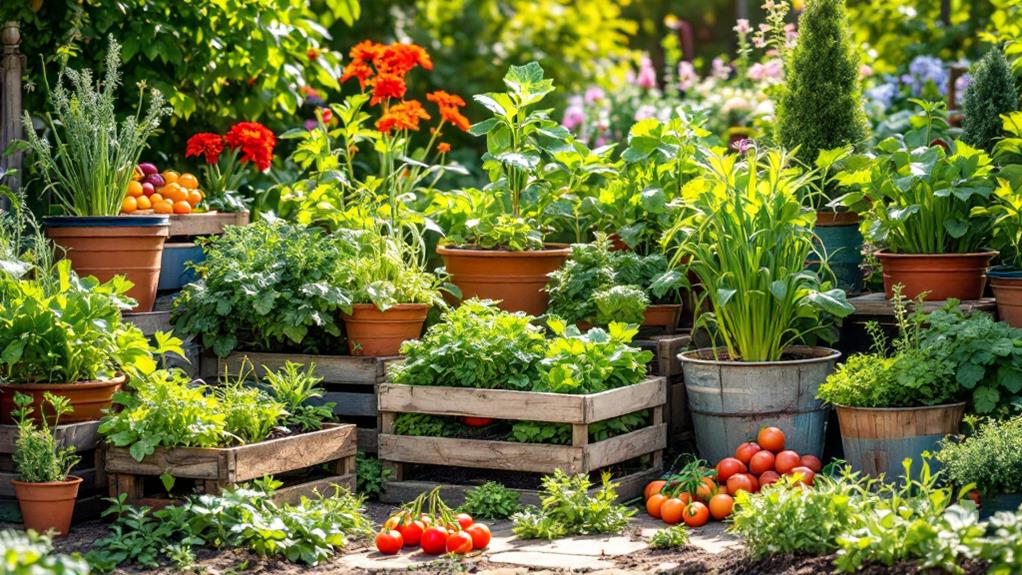
When tackling the challenges of container gardening, selecting the right containers for your vegetables becomes essential. The material you choose, like terra cotta, plastic, or wood, impacts how well your plants thrive. Terra cotta containers offer excellent airflow but dry out quickly, so they might need more frequent watering. On the other hand, plastic retains moisture longer, which is great for consistent hydration but requires attention to drainage to prevent overwatering.
Size matters greatly in vegetable gardening. Deep-rooted vegetables, such as carrots and potatoes, need containers at least 12 to 18 inches deep to accommodate their roots. Always verify your containers have adequate drainage holes at the bottom. This prevents waterlogging and protects against root rot, which can be detrimental to your vegetable plants.
Weight is another vital consideration, especially if you're gardening on a balcony. Lightweight options, like fabric grow bags or resin containers, are easy to move and still provide a supportive environment for your veggies. Finally, think about sustainability by using recycled options like buckets or wine barrels. Just make sure they're clean and have proper drainage to support your vegetable gardening efforts effectively.
Soil and Nutrients Management
A gardener's success in container vegetable gardening largely depends on effective soil and nutrients management. Choosing the right potting soil is fundamental for container plants, as traditional garden soil can cause water retention issues, leading to root rot. A well-draining potting mix is indispensable, and incorporating organic matter like compost can improve nutrient availability and better the soil structure. This guarantees that your plants have access to the necessary nutrients they need to thrive.
Regular fertilization is key because nutrients in containers can deplete quickly due to leaching. A bi-monthly application of liquid fertilizer keeps your plants healthy and productive. Don't forget to monitor the soil's pH and nutrient levels. Container soil can become imbalanced over time, so using testing kits will help you determine any necessary amendments.
Improving drainage is also significant. Layering materials such as gravel at the bottom of your containers can help, while moisture-retaining materials like coconut coir can maintain consistent moisture levels in the soil. With these strategies, you'll provide the ideal growing environment for your container plants, guaranteeing they flourish and yield a bountiful harvest.
Watering Techniques for Containers
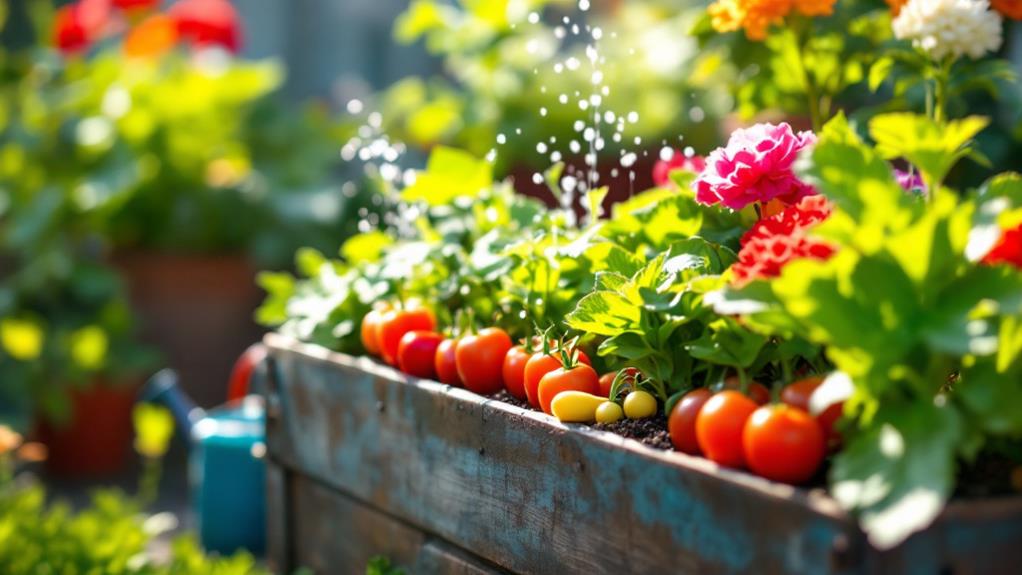
Quench your container plants' thirst with careful attention to their watering needs. Container plants typically demand more frequent watering than their ground counterparts due to limited soil volume. During hot spells above 85°F (29°C), you might need to water them daily or even twice a day. Making sure your containers have adequate drainage holes is essential to prevent overwatering, which can lead to root rot and plant stress.
To master watering techniques, consider using moisture meters. These handy tools help you monitor soil moisture levels, providing a more precise understanding of when your plants need water. This prevents guesswork and guarantees ideal hydration. Applying a layer of mulch on the soil surface is another effective method. Mulch helps retain moisture by reducing evaporation, keeping the soil consistently damp.
Temperature Impacts on Plant Growth
While ensuring proper hydration is crucial for container plants, another key factor influencing their health is temperature. Temperature impacts on plant growth can be significant, especially when you're using containers to grow your vegetables. Unlike in-ground gardens, container soil is more prone to rapid temperature changes. This can stress your plants, sometimes causing stunted growth or lower yields. Most vegetables grow well when the temperature ranges between 65°F to 75°F (18°C to 24°C). However, roots in containers can heat up quickly with direct sun exposure, often exceeding these ideal temperatures.
To manage these temperature fluctuations, consider grouping your containers together. This creates a microclimate that helps stabilize soil temperatures, protecting your plants from heat stress. Larger containers can also be beneficial as they tend to hold a more consistent temperature than smaller pots. Don't forget, during colder months, insulating containers with materials like burlap or straw can protect the roots from frost and extreme cold, ensuring your plants stay healthy. Being mindful of these factors helps your vegetables thrive, allowing them to grow well despite the challenges posed by sun exposure and fluctuating temperatures.
Maximizing Space and Sunlight
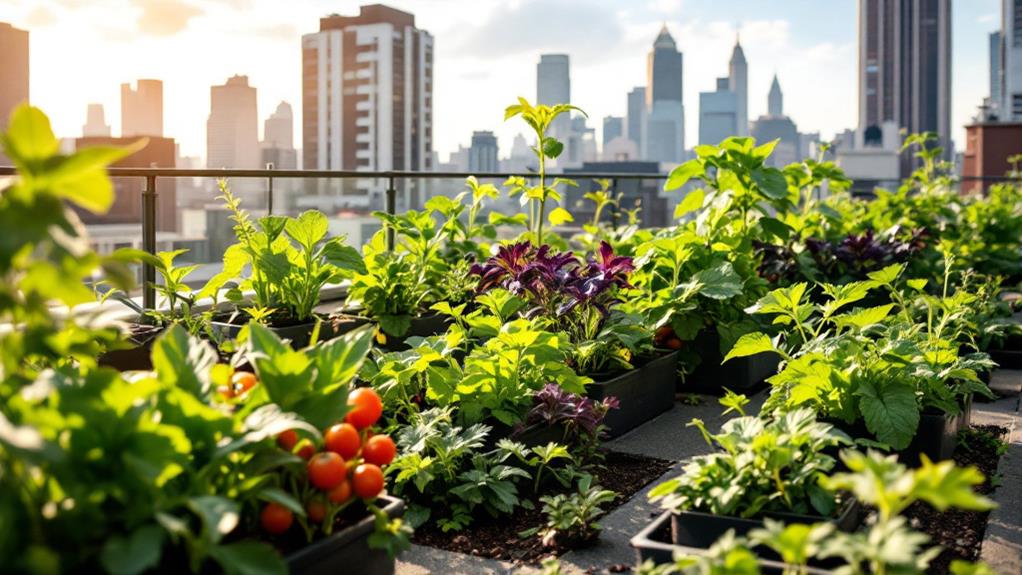
Taking advantage of container gardening's flexibility, you can strategically position pots to improve sunlight exposure, guaranteeing ideal growth for sun-loving vegetables like tomatoes and cucumbers. By placing your containers on patios, balconies, or sunny windowsills, you can extend the growing season for these warmth-loving plants. The key to maximizing space and sunlight in container gardens lies in using vertical areas effectively. Stacking or hanging containers allows you to grow more vegetables without sacrificing sunlight, as each plant can still bask in the rays it needs.
Grouping your containers together is another smart tactic. This creates a microclimate that retains warmth and humidity, which benefits plants that require extra sunlight and heat. The modular nature of container gardens means you can easily rearrange pots as the seasons change, moving them to sunnier spots to guarantee they always receive peak light.
Pest and Disease Control
Regarding managing pest and disease control in container gardens, the strategic advantage lies in the accessibility and flexibility of your setup. You can easily monitor your plants since they're right at hand, allowing you to spot signs of pests or disease early on. This ease of access means you can inspect them regularly, catching any issues before they escalate.
Using fresh potting soil in containers is another effective way to combat soil-borne diseases and pests. Fresh soil provides a clean slate that minimizes the risk of harboring harmful pathogens from previous plantings. Plus, the mobility of containers lets you react swiftly to pest outbreaks. If pests become a problem, simply move the containers indoors or to a shaded area to reduce exposure and stress on the plants.
Companion planting in containers can also help deter pests. For instance, planting marigolds alongside your vegetables can naturally repel nematodes and other harmful insects. Ultimately, don't forget to change the soil every few years. This practice helps prevent the buildup of pathogens and pests, ensuring your container gardening remains a healthy, productive endeavor. Keep your container garden thriving with these proactive strategies.
Cost Considerations and Budgeting
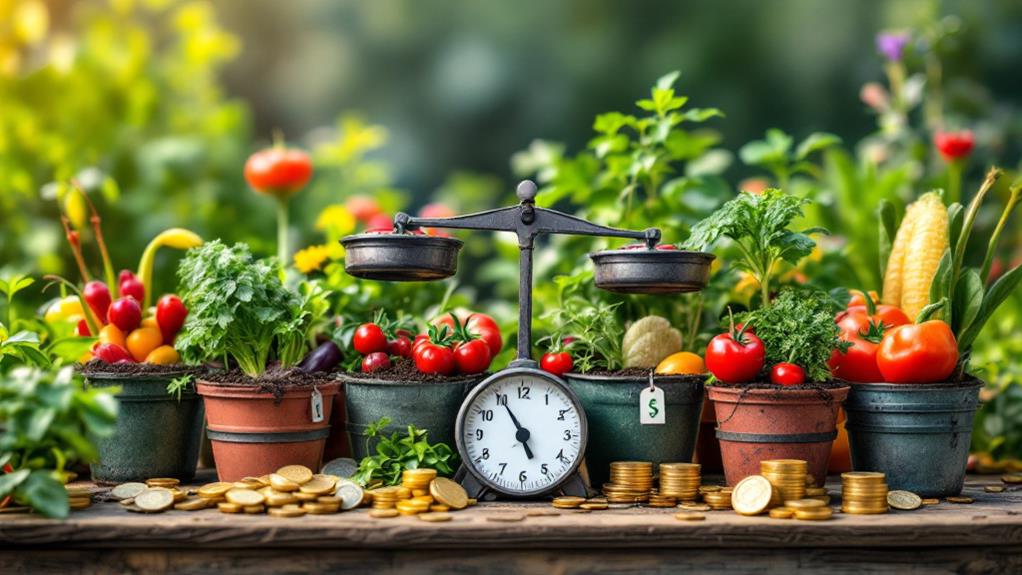
After ensuring your container garden remains pest-free, it's important to evaluate the financial aspects of starting and maintaining your setup. Cost considerations in container gardening can greatly impact your budget. You might find repurposed containers or affordable grow bags for as low as $5, but if you're aiming for durability and aesthetics, high-quality pots can cost upwards of $50. These initial expenses are significant, as investing in good-quality, durable containers may save you money over time by avoiding frequent replacements.
Next, consider the ongoing costs. A premium potting mix, crucial for vegetable growth, typically costs between $10 and $30 per bag. This is a key investment, as the quality of your soil amendments directly affects plant health. Moreover, regular fertilization is necessary, adding around $10 to $20 monthly to your budget, depending on the type and frequency.
While growing your own vegetables might reduce grocery bills, the costs of soil amendments and fertilizers can accumulate, especially in the initial season. Careful budgeting will help you balance these expenses and reap the benefits of fresh produce without straining your finances. Balancing quality and cost is fundamental to a sustainable container garden.
Enhancing Aesthetic Appeal
Container gardening offers a fantastic opportunity to improve the aesthetic appeal of any outdoor space, especially in urban settings where traditional gardening isn't feasible. By growing in containers, you can experiment with lively color combinations and diverse plant arrangements. This flexibility lets you create a beautiful and functional garden even on a small balcony or patio. Decorative containers made from materials like ceramic, metal, or wood add texture and interest, transforming your space into a focal point.
Strategically grouping these containers can result in visually pleasing displays that not only enrich aesthetic appeal but also foster microclimates beneficial for plant growth. This means your vegetables could thrive better than if they were planted in the ground. Vertical gardening is another technique to ponder. Using trellises and tiered planters, you can optimize limited space and create stunning vertical designs that blend beauty and functionality.
One of the best parts of container gardening is the ability to easily rearrange the containers. You can refresh your garden's look seasonally or for special occasions, making your space dynamic and continuously changing. Accept the potential of growing in containers to uplift your outdoor environment.

